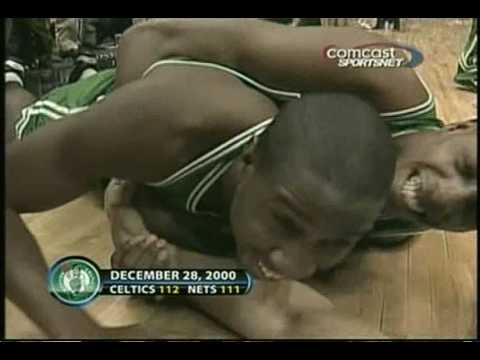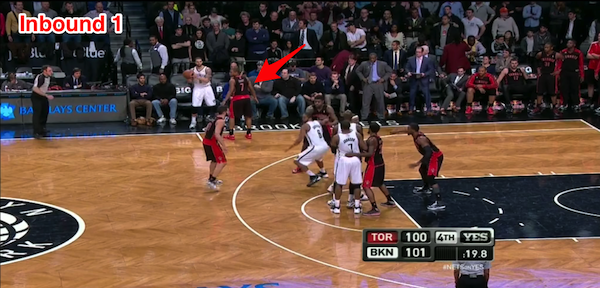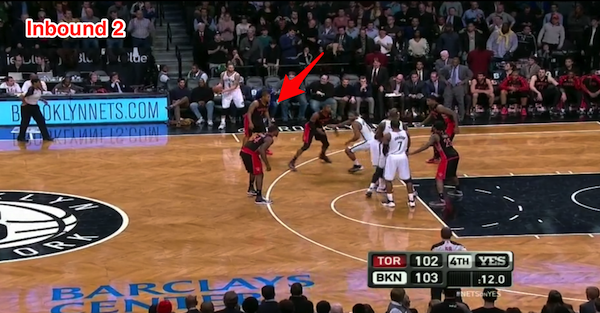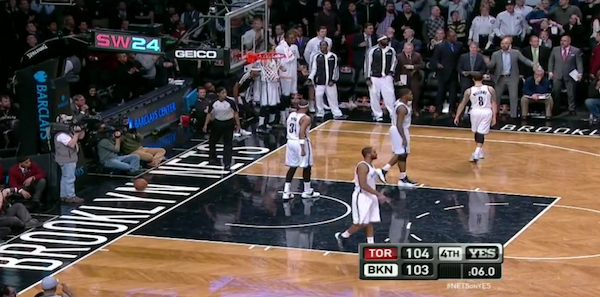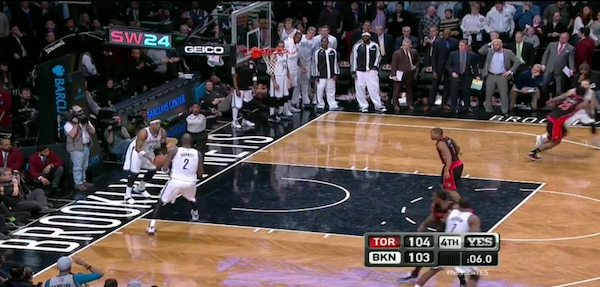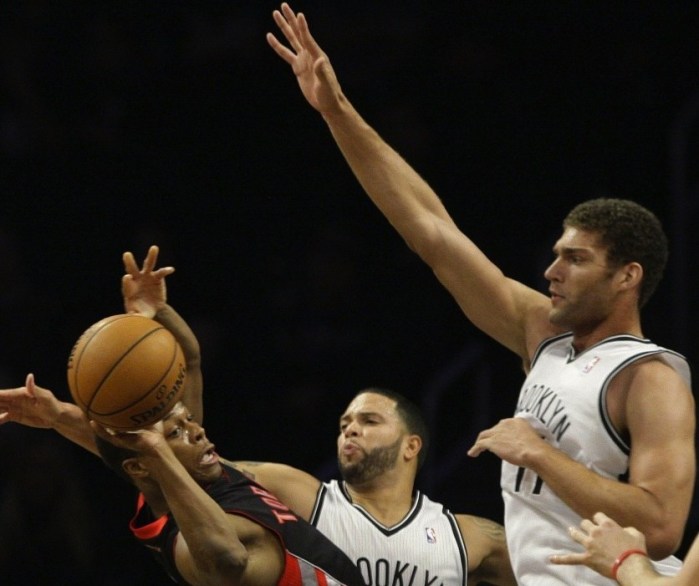It was December 28, 2000. The Nets led the Boston Celtics 111-109, with less than two seconds left, and had the ball at half-court. “Luscious” Lucious Harris was the inbounder. The anti-hero? An NBA journeyman named Milt Palacio.
That was a certified Nets disaster, and it was nearly topped last night.
When you’re the NBA’s hottest team, holding a lead and the ball with only 12 seconds left, you expect that team to win. So a loss in a situation like that stings. But not only did the Nets manage to lose that game, but lost significant ground in the Atlantic Division standings: a win would have brought them within 0.5 games of first place, instead of sitting 2.5 games back today.
How did it happen?
Every end-of-game situation boils down to a series of split-second decisions. Nail most of the decisions, and you’ll come out on top. Bungle just a few of those decisions, maybe you can recover. But treat those decisions as you would 10-day old milk like the Nets did, and you’ll experience a gut-wrenching loss.
Let’s take a deeper look at how that end of game played out, taking it from 17.4 seconds left with the Nets leading 103-100 and the Raptors with the ball.
Possession 1 – Raptors Sideline Out of Bounds (SLOB). Up 103-100. 17.4 seconds left
Jason Kidd smartly put in the Nets best defensive lineup into the game, substituting Andrei Kirilenko and Shaun Livingston in for Joe Johnson and Deron Williams. In late-game situations with a team holding a three-point lead, the main strategical question is whether or not you intentionally foul, preventing a game-tying three-pointer. But 17.8 seconds is too much time for that strategy, and Kidd agreed, as the Nets opted to defend.
Kidd’s hypothetical talk in the huddle: “We’re up three points here so we have to know that giving up a three kills more than a two. So let’s aggressively take away looks at threes, close out to all shooters and force them to drive. A contested two-point attempt is the best-case scenario for us, but let’s contain the drive as much as possible, try not to give up a straight line drive. DON’T help off shooters! If we get a stop, they have to foul us so be strong with the ball. We have a timeout left if you get trapped.”
So what happened? The Raptors got the ball into John Salmons who faced little resistance and got a straight line layup at the rim. (Amir Johnson, um, “cleared the way.” The whole possession took just about five seconds off the clock, but it wasn’t the worst-case scenario for the Nets, as they still maintained a one point lead with 12 seconds remaining.
Timeout Nets – Up 103-102, 12 seconds left
As soon as Salmons scored for the Raptors, Kidd immediately called Brooklyn’s final timeout. After the game, Kidd noted that the decision was immediate and agreed upon in advance by the coaching staff: With their defensive subs (Kirilenko/Livingston) in, if the Raptors scored, the Nets would use their final timeout to re-enter their best free throw shooters (Williams/Johnson).
So aside from stopping the Raptors, everything went according to plan.
Calling the timeout changes two things about the inbounds: it allows the Nets to advance the ball into the frontcourt, but it takes away the inbounder’s ability to move.
Now, with his best free-throw shooting unit on the floor, Kidd must decide what play he wants to use to get someone free for a catch. All the players must be made aware that they don’t have any timeouts left, so they’ll really need to continue working to get open if they’re cut off initially as the Nets HAVE to get the ball inbounds.
Possession 2 – Nets ball, SLOB. Up 103-102. 12 seconds left.
The Nets set up the same way they had just one possession earlier. Williams was the inbounder and Anderson, Pierce, Garnett and Johnson stood in a stack alignment. Anderson triggers the action by looping around the stack, with the three other players breaking off back towards the ball.
There was one key difference between the two possessions: how the Raptors defended it.
On the previous inbounds, the Raptors had Kyle Lowry facing Williams, pressuring his inbounds pass. On the second inbounds, the Raptors had Lowry not guard the pass, but instead deny cutters to the ball. An important wrinkle and perhaps something dictated by the Nets not having any timeouts left. Look:
As the play materialized and no Nets were open, Williams’ internal clock began nearing five and he elected to throw a long pass towards Joe Johnson in the backcourt, but also towards the Raptors basket.
As any good Milt Palacio fan will tell you, throwing an inbounds pass towards an opponent’s hoop can be devastating.
Possession 3 – Raptors ball. Up 103-102. 12 seconds left.
Williams’ pass was stolen by Patrick Patterson and the Nets were put in a desperate, scramble situation defensively. Considering the circumstances, they did a decent job, forcing the Raptors into two passes, but the ball wound up back in Patterson’s hands and he calmly sank a five-foot jumper to give the Raptors the lead.
Possession 4 – Nets ball. Down 104-103. 6 seconds left.
After giving up the bucket to Patterson, the Nets immediately drooped and their body language left something to be desired.
In the picture above you can see all the Nets walking away from the ball, with Williams even walking towards the bench, as Kidd frantically urged the Nets to inbound.
Even still, upon remembering they were out of timeouts, the five Nets on the floor were under massive confusion as to who should inbound the ball, before finally, Garnett sprints back to inbound.
Now, six seconds is plenty of time, enough for five dribbles and a shot. And because the clock doesn’t start until the ball is touched inbounds, you’d like to get a catch as far into the court as you can, ensuring that you will be able to get in scoring range with as much time as possible. The Nets did not do this.
Amongst the confusion, as Garnett sprints back to inbound Pierce instead steps out of bounds and throws the ball in to Garnett who is standing right about on the baseline. This starts the clock with the Nets having to travel the furthest distance possible to get into scoring range.
Upon inbounds, Garnett immediately handed back off to Pierce who did the best he could and actually nearly sank a miracle three at the buzzer.
But the damage was done.
A lot needs to go right in succession to win a basketball game and poor decision making can be killer. Before last night, you could just ask Lucious Harris. Now you can ask Deron Williams.

